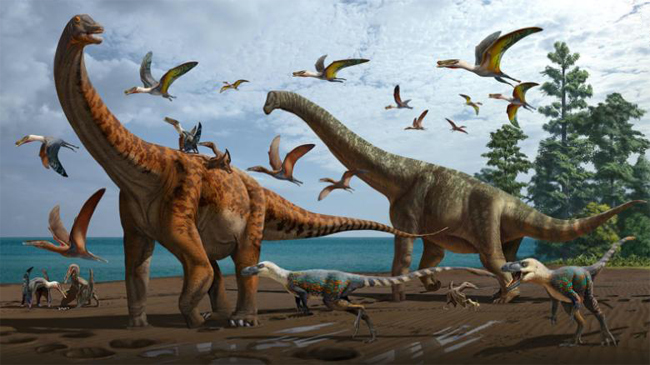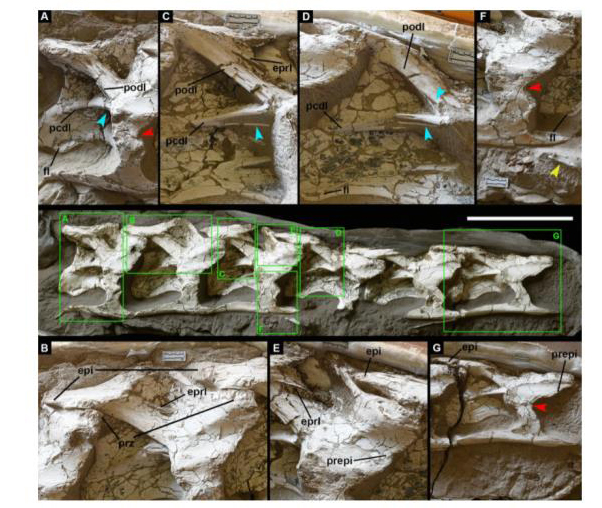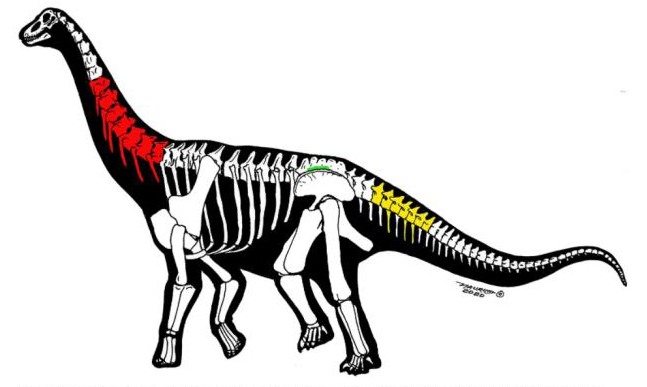Two New Sauropods from the Lower Cretaceous of North-western China
In 2017, Everything Dinosaur reported on the discovery of an extensive pterosaur nesting site that had been found south of the Tian Shan Mountains in Xinjiang (Xinjiang Uygur Autonomous Region), in north-western China. The bonebeds represented colonial nesting sites of Hamipterus tianshanensis. It was a flying reptile that had been formally named and described back in 2014.
To read Everything Dinosaur’s 2017 article about the Hamipterus nesting sites: Hamipterus Nesting Ground Discovery.
New Sauropods Described
Fieldwork in this area has revealed the presence of dinosaurs and a paper has been published this week describing sauropod fossils. These are the first dinosaurs to be identified from this part of China. Two of the fossil specimens have led to the erection of new sauropod species Silutitan sinensis and Hamititan xinjiangensis. Four incomplete bones from the sacrum along with associated sacral ribs representing another sauropod specimen have also been found, but as yet, no genus for these fossils has been assigned.

Silutitan sinensis
Described from a series of six articulated cervical vertebrae (neck bones), with associated cervical ribs, Silutitan sinensis (which translates as Chinese Silk Road Titan), has been assigned to the Euhelopodidae family and is thought to have been closely related to Euhelopus (E.zdanskyi). At an estimated twenty metres plus, it is the larger of the two sauropods to be described in the scientific paper.

Hamititan xinjiangensis
Although contemporaneous with Silutitan (Lower Cretaceous, Shengjinkou Formation of the Tugulu Group). Hamititan was not closely related. Cladistic analysis based on the tail bones (caudal vertebrae) from which this dinosaur was described, suggests that Hamititan is a titanosaur (a lithostrotian titanosaur), as such, it seems more closely related to South American titanosaurs such as Epachthosaurus and Notocolossus.
The genus name translates as Hami City Titan, whilst the species name honours the Xinjiang Uygur Autonomous Region of China.
A single theropod tooth (below, picture F), indicates the presence of theropod dinosaurs.

No Name for the Third Specimen
A third specimen consisting of four sacrum bones and associated sacral ribs has not been assigned to a species. However, the researchers, writing in the academic journal Scientific Reports conclude that not only do these fossils represent the first dinosaurs to be described from the Shengjinkou Formation but they also help to support the hypothesis that Asia was home to a great variety of different types of sauropod during the Early Cretaceous.

The scientific paper: “The first dinosaurs from the Early Cretaceous Hami Pterosaur Fauna, China” by Xiaolin Wang, Kamila L. N. Bandeira, Rui Qiu, Shunxing Jiang, Xin Cheng, Yingxia Ma and Alexander W. A. Kellner published in Scientific Reports.
The Everything Dinosaur website: Dinosaur Models and Toys.

